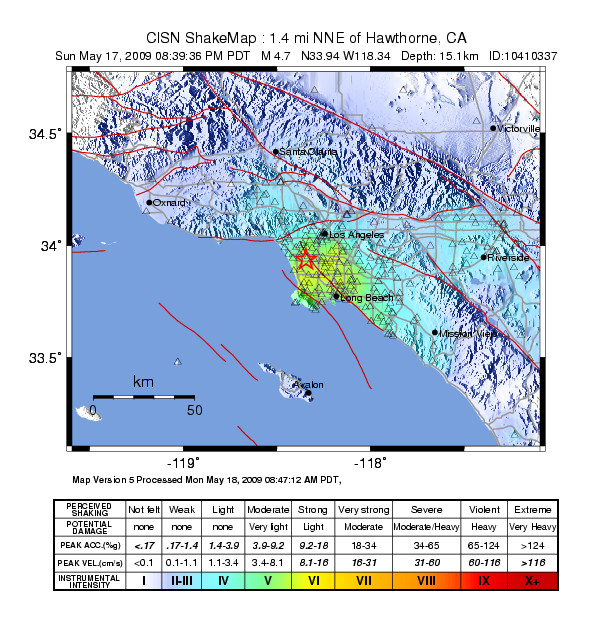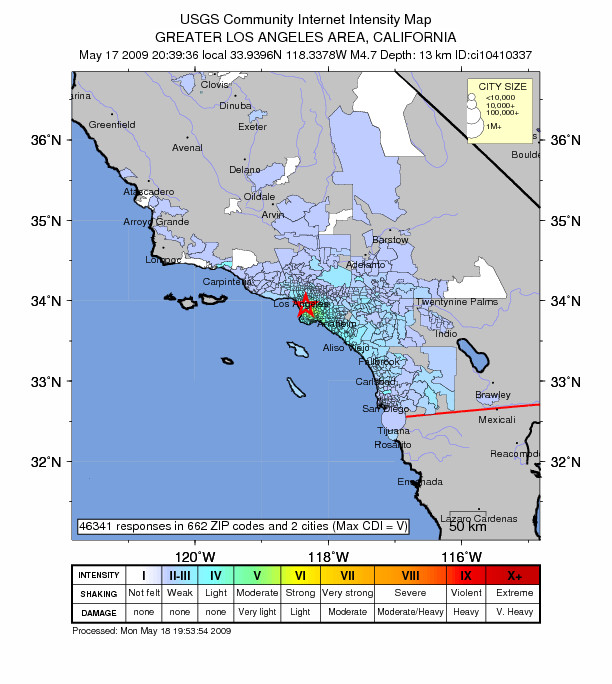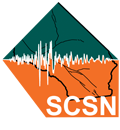Report by the California Integrated Seismic Network (Caltech/USGS)
Egill Hauksson, Lucy Jones, Sue Hough, Anthony Guarino, and Ken Hudnut
A Mw4.7 mainshock occurred 1 miles south of Inglewood, in the Los Angles area at 8:39 pm (Pacific) on Sunday, 17 May 2009. The LAX airport is within 5 miles of the epicenter. The main shock was followed by a M3.1 aftershock at 8:45 pm. In the first two hours, a total of four aftershocks were recorded.
The mainshock was felt across most of southern California. Strong shaking was reported across the Los Angles basin. About 40,000 people had responded as having felt the earthquake, approximately 2 hours following the earthquake. Because of the small size, only light damage was reported.

The event was felt over a large regional area, from Fresno to the north, San Diego to the south, and Las Vegas to the east. If you felt this event, and would like to report it click here. The map below displays reports from the Community Internet Intensity Map (CIIM). The reporting areas are broken up by zip code. The maximum reported intensity for any area was MMI V, reported in South Los Angeles, near the areas of Watts and Lynwood. This maximum reported intensity correlates to the CISN created ShakeMap, which displays the maximum intensity five miles due east of the epicenter of the earthquake. The ShakeMap (above) and the CIIM Map (below) display this anomaly more clearly when zoomed in by a factor of five.

It is not possible to tell at this time what fault caused the earthquake, although one of the nodal planes has the same strike as the Newport-Inglewood fault. The two fault planes are:
| Plane | Strike | Rake | Dip |
|---|---|---|---|
| NP1 | 140 | 144 | 72 |
| NP2 | 243 | 22 | 56 |
This is the largest event to occur in the Los Angles region since the Mw5.4 Chino Hills earthquake, back on 29th of July 2009.
A M4.9 occurred on 21st of June 1920 in the same region. Other earthquakes in the region are mostly smaller seismicity in the M2 to M3 range. The 1933 Mw6.4 Long Beach earthquake was located 25 miles to the southeast along the Newport-Inglewood fault.



